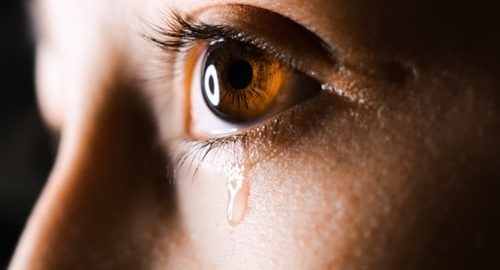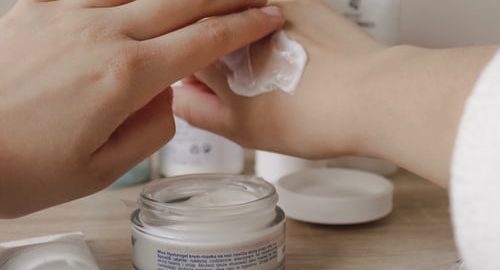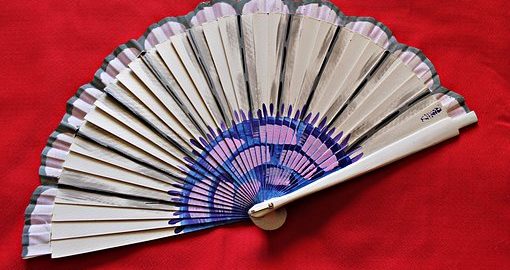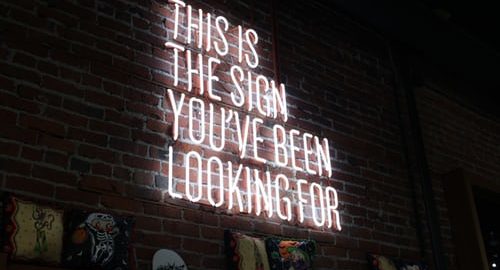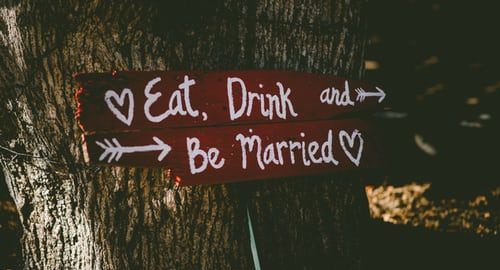- Choose a Healthy Diet
Ok, I know
you know and you know I know you know, but it’s bears repeating because it’s
just so important. Eating well helps
with all our aging parts. Midlife is the time to take stock of your diet and pinpoint
any deficiencies, this is also the time to do a scan of your daily diet. Is there an abundance of sugar or fried
foods, or maybe just a lack of a variety of vegetables? If so, now is the time to try and incorporate
more produce diversity, healthy protein and whole foods into your diet.
According
to current dietary guidelines, our caloric intake needs peak for both men and
women from the ages of 19-25 and then are reduced by about 200 calories a day
from then until the age of 50. Starting
around the age of 50, we once again require another 200 fewer calories a day,
unless we are maintaining a higher level of vigorous activity, are pregnant or
have other reasons for needing more calories.
So, hone in on the dietary areas that you can improve upon and how often
you are moving in a day, and don’t forget that even though we may need fewer
calories overall, we still need adequate amounts of protein, vitamin D and
calcium to ensure bone strength.
Maintaining a healthy diet in midlife may protect against
mental illness and cognitive decline in later years. A study published in the American Journal of
Medicine showed a correlation between a healthy diet in midlife and a larger
hippocampus, maintaining cognitive function and brain health longer. For women, a well-balanced diet in midlife
can also assist in managing peri-menopausal indicators by regulating blood
sugar, helping keep extra weight off and even hot flashes at bay.
To get you excited and interested, try rounding up a few friends and take a healthy cooking class together. If your time is limited or you are overwhelmed with daily tasks and to-dos, and have the means, try a subscription meal service which can provide you with portioned ingredients and a step-by-step recipe for creating healthy, flavorful dishes. Meal subscription services can take over the task of shopping and having to come up with something tasty and creative at the end of a long day – all you have to do is cook and enjoy. If this is not in your scope, more basic home cooked healthy meal preparation done and frozen for the week ahead might be a good option and it can save the temptation to run through a drive-thru for a quick meal solution.
2. Maintain Your Flexibility
Do your toes seem to be getting further and further out of
reach? Do you dread sitting down on the floor for fear that you won’t be able
to make it back up? Loss of flexibility is probably to blame. Flexibility is the
ability to move your joints through a wide range of motion. Aging does not
necessarily make us less flexible, although the changes the levels collagen in
the tissues may cause stiffness and even aches in our joints, it is often our midlife
lifestyle to blame for tightness and limited range of motion. Flexibility is one of those things that
unless we are actively using it today, we are probably actively losing it and
often we don’t realize this until we try to bend over to tie our shoes one day
and ask ourselves ‘what happened?’.
Joseph Pilates, founder of the Pilates exercise system, said “you are as
old as your spine is flexible” and “if your spine is inflexible and stiff at 30
you are old. If it is completely flexible at 60, you are young.”
Keeping joints supple and flexible in midlife is crucial. Joints like those in the neck, shoulder,
wrist, hip, ankle and spine are ones that most risk becoming inflexible as a
result of patterns formed over years of often dysfunctional movement and poor
postural habits formed by our modern workspaces: looking down at cell phones,
craning the neck forward to stare at the computer screen, slouching, sitting
long periods of time, etc. All of which
can lead to limited mobility, stiffness and feeling, well, old.
Make and take time to stretch each day; it is much easier to
retain flexibility than to gain it. While stretching cannot combat inflammation
or reverse structural damage, it can reduce the chance of injuries while moving;
especially in quick movements while being active like playing tennis and
running or in movements that catch us off guard like tripping and falling but
even in day to day movement as well. Before
I was an avid stretcher, I once pulled my lower back muscle bending over to
pick up a packet of sugar that I dropped on the floor of my car. Not fun.
Simple stretches for the joints listed above are great additions to your daily routine. Think of it as midlife movement maintenance. Find stretches that work for your body and can combat habitual movement patterns. Remember, our bodies were meant to flex, extend and rotate. Stretching is a way to bring back or maintain a natural suppleness to our bodies and be able to move through space with ease, grace and joy. Plus, it just feels so dang good.
3. Retain Your Balance
Balance in life is always a goal, but balancing our bodies
is essential to midlife health. Balance
involves the complex functioning of many systems in cooperation: the inner ear,
vision, how we experience where we are in time and space and muscle mass and
strength. When one, or several, of these
systems is off, we may experience a loss of balance, or worse, a fall. And as our systems experience aging, they may
start to have some decline in the effectiveness of even simple activities that
require balance such as standing on one foot, moving from sitting to standing
freely or moving securely on unstable surfaces such as ice, high curbs or
uneven pavement.
While falls may still be the leading cause of injuries for
Americans ages 65 and older (according to the National Council on Aging), for
those of us in midlife we may not even know our balance is slipping until we
suddenly lose our footing. In fact, according to research done by BMC Public
Health, the rate of reporting falls increased with age from 18.5% in young
adults or 21% in those middle-aged, with women in the majority. The young participants fell more outdoors
while the middle and older aged group saw an increase in indoor falls with a
higher reporting of balance/gain impairment as the cause. A 2016 survey in The
Journals of Gerontology found that when standing on one leg, the average person
in their 50s were able to maintain balance 15 seconds less than their thirty-or
forty-year old counterparts; the time frame declined with each decade
thereafter.
Loss of balance seems to just sneak up on us midlifers. Retaining balance involves maintaining activities
that keep us moving and agile such as walking, running, tai-chi and yoga as
well as incorporating balance work into our everyday lives.
Find ways to incorporate balance into your day. Balance on one leg while waiting in line,
blow drying your hair or brushing your teeth. Walk heel-to-toe across a room
and back a few times, step side to side across a room or practice rising from a
seated position in a firm chair without using your arms for balance.
Please note: Medications, certain neurological conditions, vertigo and even a vitamin D deficiency can also alter your sense of balance at any age, so talk to a health care provider if you notice that your balance is way off.
4. Get Enough Sleep
Sleep is critical for memory and acquisition of new
information. It also may make some of us
less cranky (you know who you are), gives us more energy, keeps our immune
system in good fighting shape, repairs muscles and may even stave off
depression and even anxiety.
A recent study
published in the journal Sleep Medicine states that one third to one half of
women 40-64 report sleep problems, with poor sleep (insomnia, restless sleep
and sleep disturbances) being one of the biggest complaints for menopausal
women; yet our need for good, quality sleep does not diminish as we age. According to Dr. Caroline Apovian, director
of the Nutrition and Weight Management Center at Boston University, next to
right nutrition and proper exercise, sleep is the third critical component of
wellness (limiting alcohol consumption rounds out this health and wellness
dream team). And while smoking is still the leading cause of mortality, sleep
deprivation comes in at number 3, behind a poor diet with a lack of exercise.
Most of us just aren’t getting enough sleep and we are paying for it, literally,
with our lives.
When we
keep running on venti Blonde Roasts and 5-hour energy hits, we over-spend our
system and run into debt – sleep debt.
In our 24-hour world, taking one third of it away and indulging in an
8-hour night may feel like a luxury, but we need to look at sleep as a form of
non-negotiable self-care. Lack of
quality sleep over time catches up with us and can negatively affect our skin,
heart, weight and overall well-being.
One study of middle-aged women showed that getting less than 7 hours of
sleep on a regular basis consistently predicted an increase in future weight
gain. Even just a few nights of poor sleep can trigger more calorie consumption
during the day, leading quickly to unwanted pounds. While consistent good sleep may not help you
lose weight, giving serious attention to improving the quality and quantity of
sleep in midlife may help manage weight.
The
journal Science, revealed that the brain uses it’s glymphatic system to clean
away toxins as we sleep, toxins that can lead to neurological disorders and
even Alzheimer’s disease. Maiken
Nederfaardm M.D., D.M. Sc, co-director of the University of Rochester Medical
Center for Translational Neuro-medicine uses the analogy of a having a house
party to describe the brains limited energy and “choice between two functional
states – awake and aware or asleep and cleaning up” He says, “You can either
entertain the guests or clean up the house, but your really can’t do both at
the same time.”
Chronic
lack of sleep also raises our chances of developing Type 2 diabetes,
cardiovascular disease, hypertension and puts us at higher risk for depression
and accidents and it really just makes us cranky. In midlife, one of the best things you can do
is try to improve the quality and quantity that you get of good, deep
sleep. It is so critically important for
overall well-being and health and can give you the strength and energy needed
to manage this crucial time in your life.
So how can you sleep better in midlife? Make it a priority. Go to bed the same time each night, our
bodies do much better with regular sleep patterns. Make your bedroom the place to sleep, not
watch TV, craft or snack. Sleep in as
dark a room as possible and as cool as you can tolerate it and try to establish
a relaxing night time routine.
Each of these four ‘Musts’ work with and support the other
to create a holistic picture of health. Maintenance in midlife is a commitment
to self-care and paying attention to what you need to be your best not only
today but for years to come.
References:
15 Simple And Quick Office Stretches To Boost Work Efficiency. Life Hack Online. https://www.lifehack.org/articles/productivity/15-simple-and-quick-office-stretches-boost-work-efficiency.html
Akdeniz S, Hepguler S, Öztürk C,
Atamaz FC. The relation between vitamin D and postural balance according to
clinical tests and tetrax posturography. J Phys Ther Sci. 2016;28(4):1272–1277. doi:10.1589/jpts.28.1272
Akbaraly,
Tasnime et al. Association of Long-Term Diet Quality with Hippocampal Volume:
Longitudinal Cohort Study. The American Journal of Medicine, Volume 131,
Issue 11, 1372 – 1381.e4
Apovian, Caroline,
MD. The Age-Defying Diet, Grand Central
& Style, New York 2015 pp. 95-101
Balance Exercises,
The Mayo Clinic. https://www.mayoclinic.org/healthy-lifestyle/fitness/multimedia/balance-exercises/sls-20076853?s=1
Fall Prevention: https://www.ncoa.org/healthy-aging/falls-prevention/
Harrison, Nicholle. Falling
Apart and Finding Yourself: A Guide for Women in Midlife. Book Logix. 2019.
Study Published in Annals of Internal Medicine Finds
That Sleep Deprivation — Even for a Short Time — Has a Direct and Harmful
Effect on Fat Cells, an Effect That Could Lead to Major Health Issues Such as
Obesity or Type 2 Diabetes.” Obesity & Diabetes Week, 29 Oct.
2012, p. 26.
Talbot, L.A., Musiol, R.J., Witham,
E.K. et al. Falls
in young, middle-aged and older community dwelling adults: perceived cause,
environmental factors and injury. BMC Public Health 5, 86 (2005) doi:10.1186/1471-2458-5-86
The Journals of Gerontology: Series A, Volume 72, Issue 4, 1 April 2017, Pages 572–578, https://doi.org/10.1093/gerona/glw120
